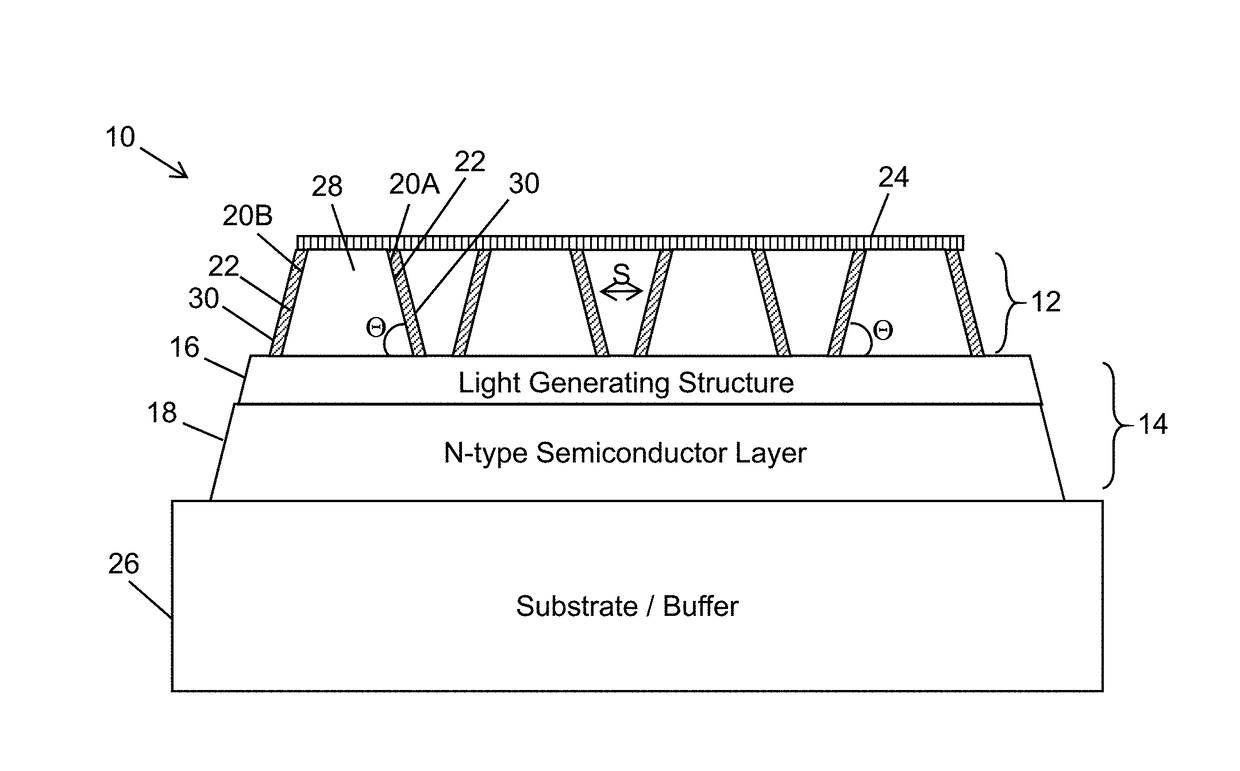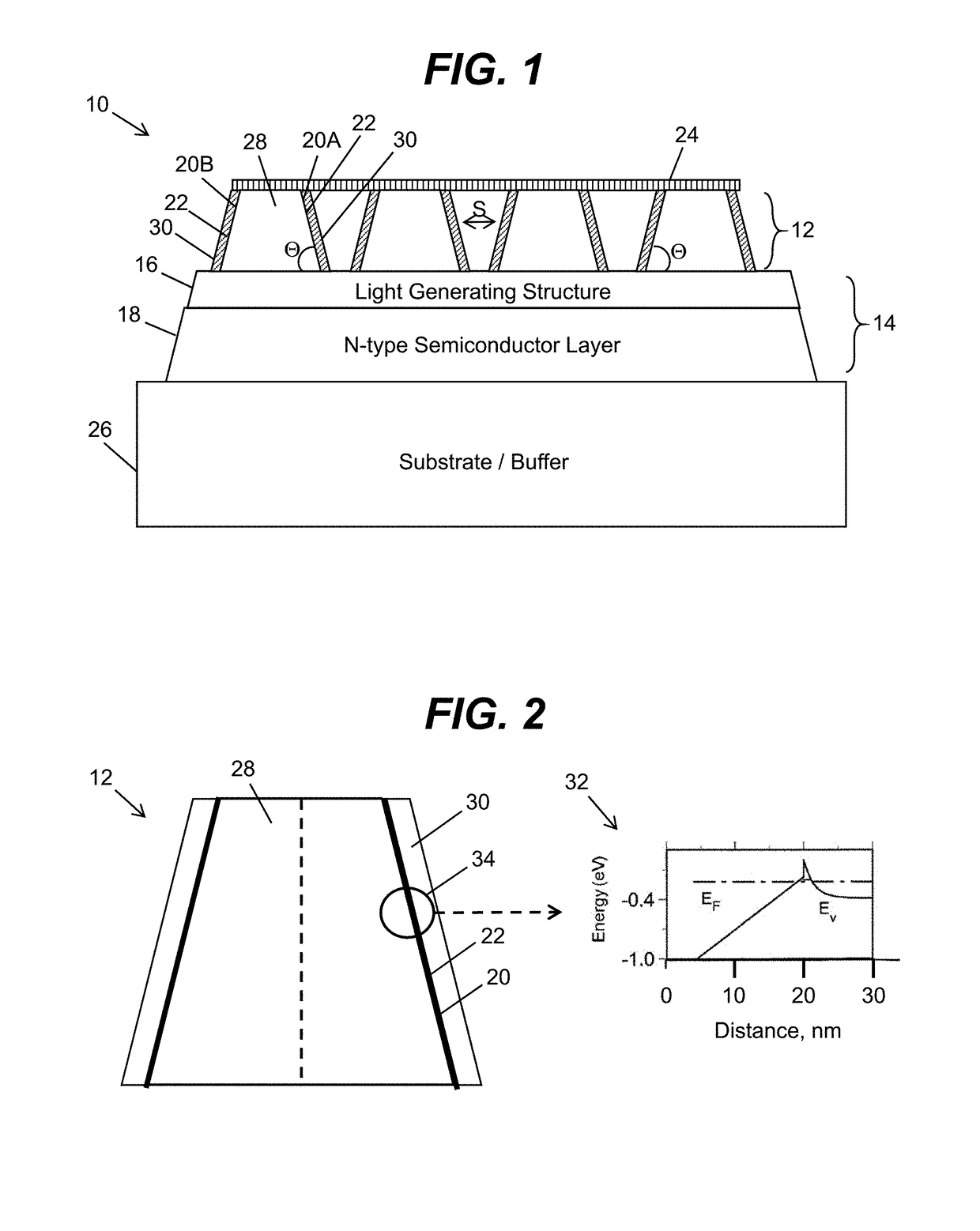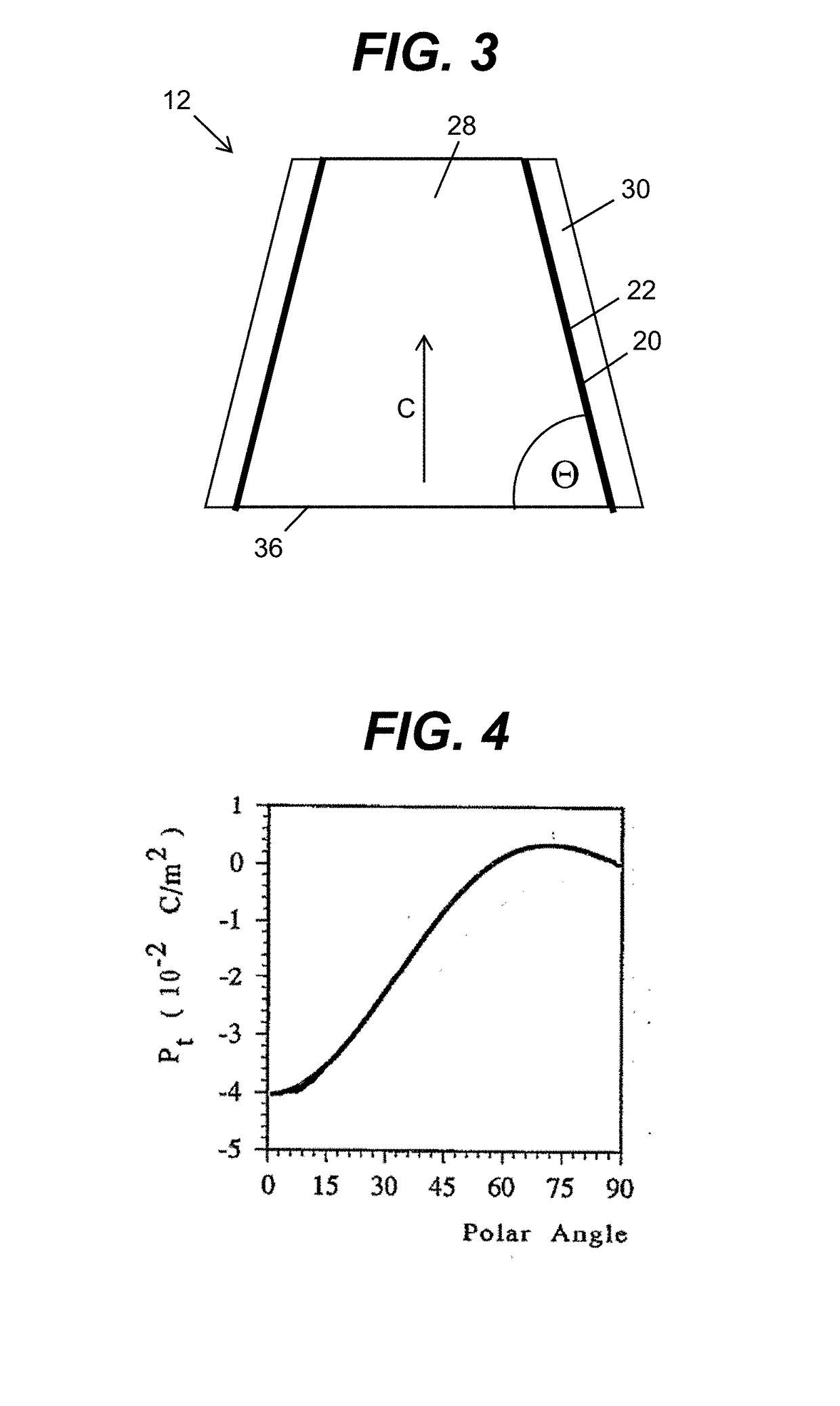Opto-Electronic Device With Two-Dimensional Injection Layers
a technology of optoelectronic devices and injection layers, which is applied in the direction of basic electric elements, semiconductor devices, electrical equipment, etc., can solve the problems of reducing the lateral spreading resistance, not allowing significant improvement, and increasing the turn-on voltage of uv led devices
- Summary
- Abstract
- Description
- Claims
- Application Information
AI Technical Summary
Benefits of technology
Problems solved by technology
Method used
Image
Examples
Embodiment Construction
[0049]The various embodiments are directed to improving carrier injection in opto-electronic devices such as UV LEDs. Improved carrier injection is obtained in the various embodiments of the present invention by forming 2DG layers at a heterointerface between two materials with different compositions. In one embodiment, a set of tilted semiconductor heterostructures can be formed over a single or multi-layered semiconductor structure having a light generating structure. Each of the tilted semiconductor heterostructures can include a core region and a set of shell regions that each adjoin a sidewall of the core region. The core region and the set of shell regions can include different compositions of the same material. The heterointerface between the core region and the shell regions leads to the formation of 2DG layers at the interface between the two materials with different compositions.
[0050]As used herein, an opto-electronic device can include any light emitting device or solid ...
PUM
 Login to View More
Login to View More Abstract
Description
Claims
Application Information
 Login to View More
Login to View More - R&D
- Intellectual Property
- Life Sciences
- Materials
- Tech Scout
- Unparalleled Data Quality
- Higher Quality Content
- 60% Fewer Hallucinations
Browse by: Latest US Patents, China's latest patents, Technical Efficacy Thesaurus, Application Domain, Technology Topic, Popular Technical Reports.
© 2025 PatSnap. All rights reserved.Legal|Privacy policy|Modern Slavery Act Transparency Statement|Sitemap|About US| Contact US: help@patsnap.com



